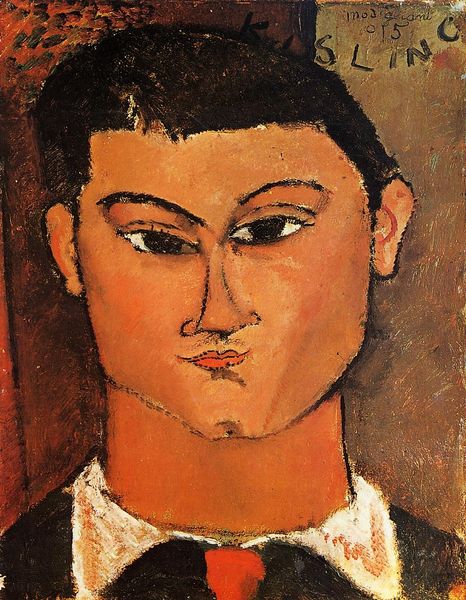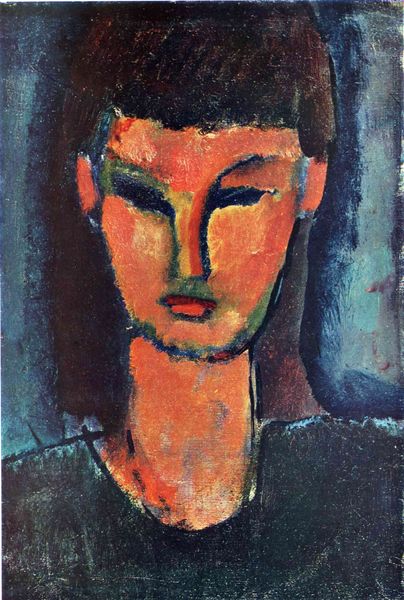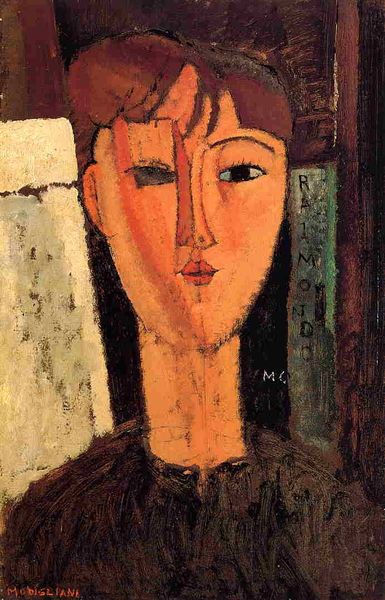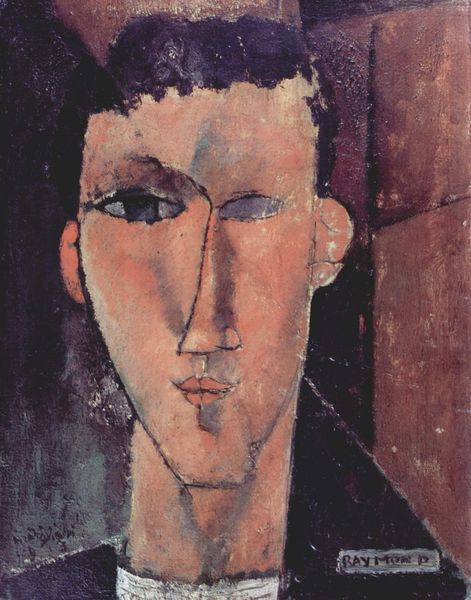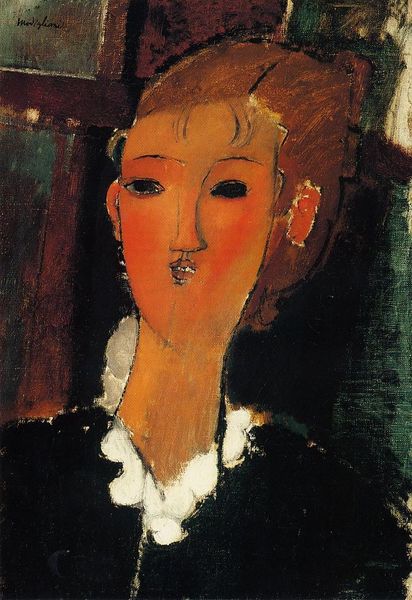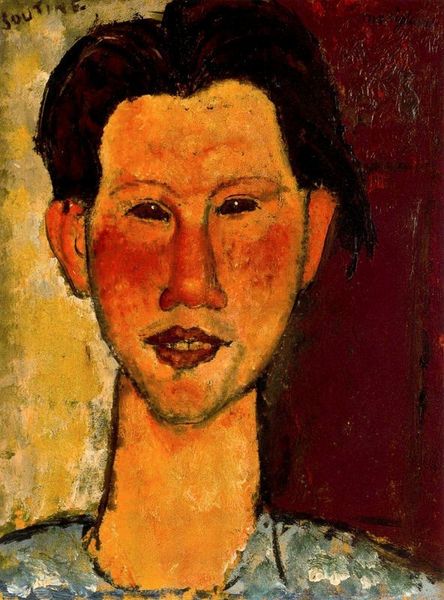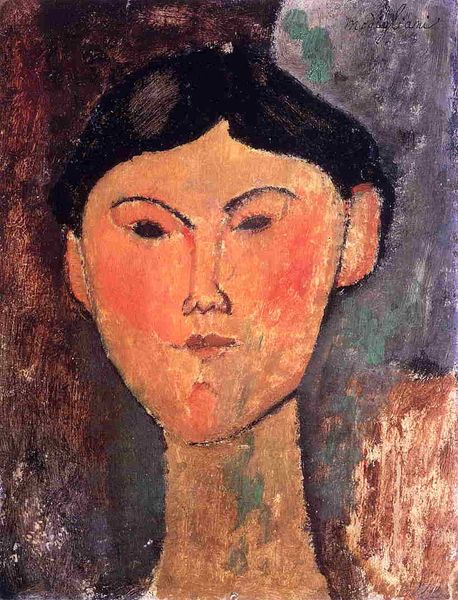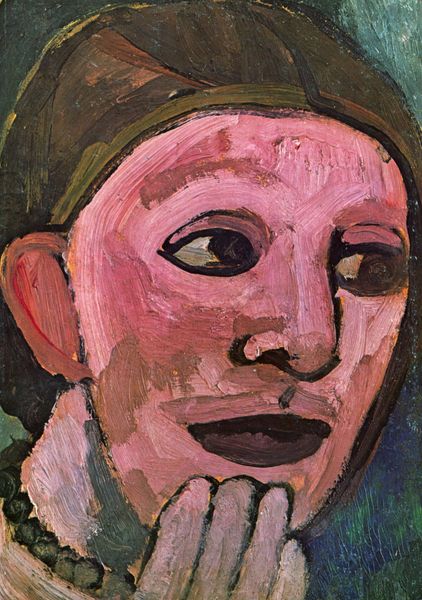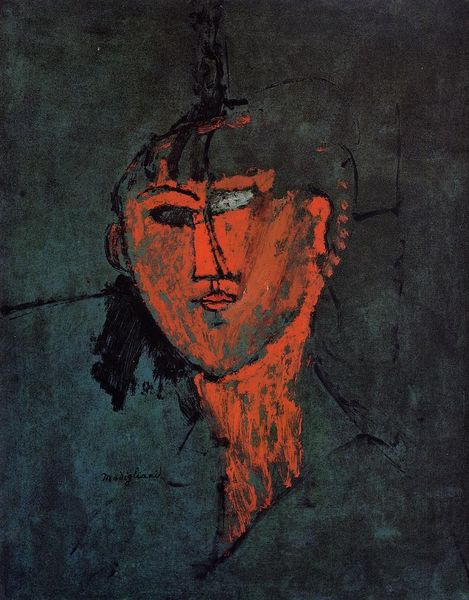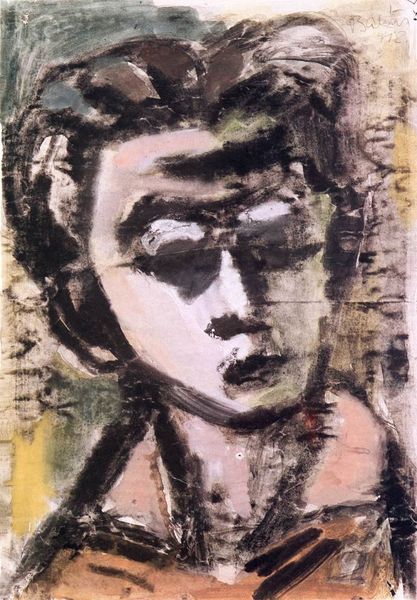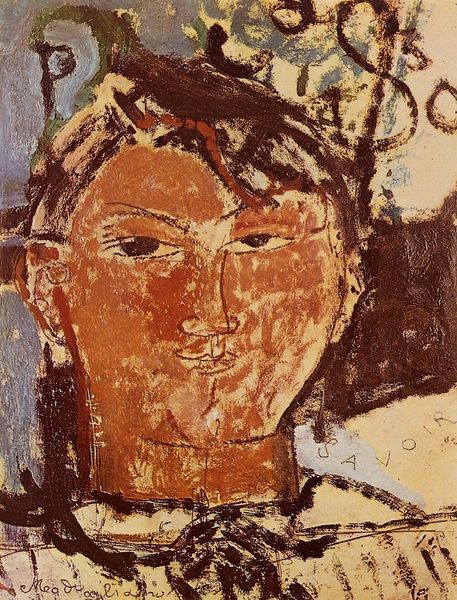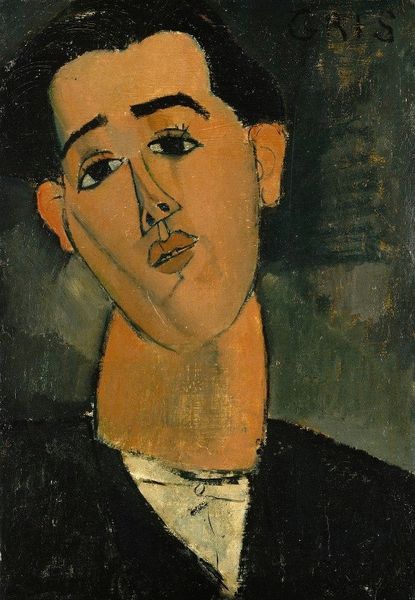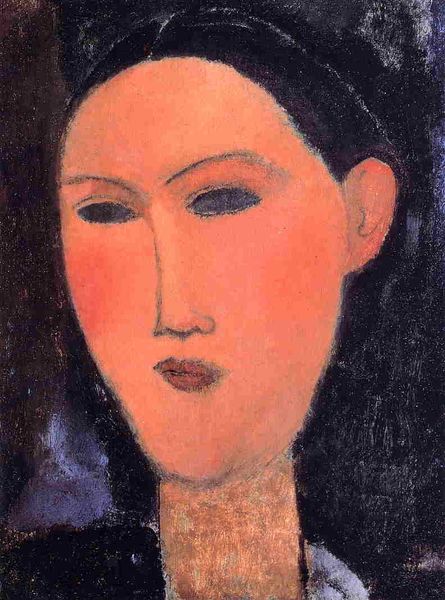
oil-paint
#
portrait
#
oil-paint
#
oil painting
#
portrait reference
#
famous-people
#
male-portraits
#
expressionism
#
portrait drawing
#
italian-renaissance
#
portrait art
#
modernism
Copyright: Public domain
Curator: Painted in 1915, this is Amedeo Modigliani’s “Portrait of Picasso,” now held in a private collection. Editor: The eyes are unsettling. The stark black against the warm red tones of the face creates an arresting and slightly unnerving contrast. What is it about? Curator: Well, Modigliani and Picasso met in Paris in the early 1900s. They influenced each other considerably. The story goes that Modigliani admired Picasso's work ethic, and that may have fueled the creation of this particular artwork. What stands out to me, however, is the labor involved in this particular piece. The brushstrokes, and the mixing of pigment; so fundamental to art production itself. Editor: Yes, there is the material production element. But Modigliani really distills Picasso to his essential forms, doesn’t he? The simplified planes of the face, the geometric nose – they are almost Cubist, which reflects Picasso's own exploration with the Cubism movement. I wonder, how does the semiotic element enhance the context of the piece, by understanding the underlying language in the work? Curator: Knowing how central labor and the means of production are to any society, I think the focus should rather be on how artists collaborate to facilitate, and boost each other's morale within their community. Take the fact that Modigliani was influenced by Constantin Brancusi, with whom he shared a studio. His experience making sculpture obviously impacts his painting process and technique. Editor: I concede. Modigliani simplifies Picasso's features, almost abstracting him, which also lends a sense of universality. It’s about capturing something essential about Picasso. Let's consider also the expressive dimension, and the lack of depth, as if to imply the absence of Picasso's character behind his public persona. Curator: Interesting, so the semiotic analysis allows for a consideration of Picasso's position, as it relates to others around him, and how he can remain connected through relational processes, especially production through portraiture? Fascinating! Editor: Absolutely, understanding the internal arrangement allows us to fully unpack it. Thank you. Curator: Thank you too!
Comments
No comments
Be the first to comment and join the conversation on the ultimate creative platform.
